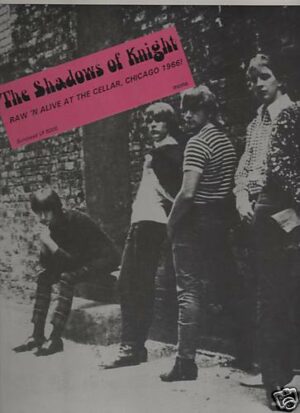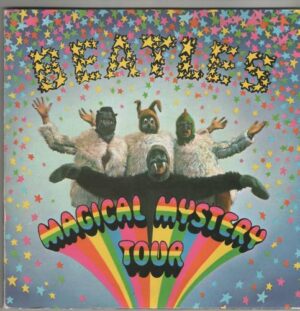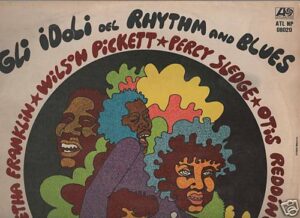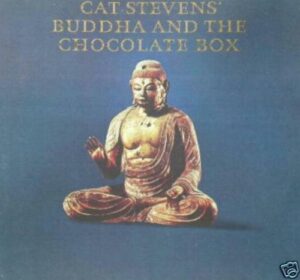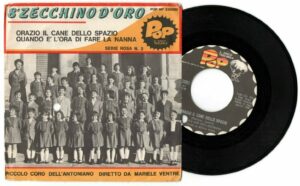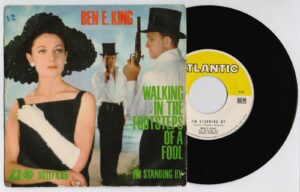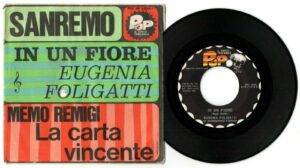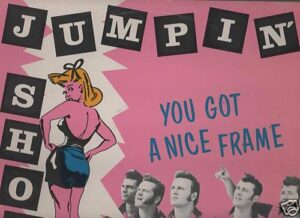Description
PREMESSA: LA SUPERIORITA’ DELLA MUSICA SU VINILE E’ ANCOR OGGI SANCITA, NOTORIA ED EVIDENTE. NON TANTO DA UN PUNTO DI VISTA DI RESA, QUALITA’ E PULIZIA DEL SUONO, TANTOMENO DA QUELLO DEL RIMPIANTO RETROSPETTIVO E NOSTALGICO , MA SOPRATTUTTO DA QUELLO PIU’ PALPABILE ED INOPPUGNABILE DELL’ ESSENZA, DELL’ ANIMA E DELLA SUBLIMAZIONE CREATIVA. IL DISCO IN VINILE HA PULSAZIONE ARTISTICA, PASSIONE ARMONICA E SPLENDORE GRAFICO , E’ PIACEVOLE DA OSSERVARE E DA TENERE IN MANO, RISPLENDE, PROFUMA E VIBRA DI VITA, DI EMOZIONE E DI SENSIBILITA’. E’ TUTTO QUELLO CHE NON E’ E NON POTRA’ MAI ESSERE IL CD, CHE AL CONTRARIO E’ SOLO UN OGGETTO MERAMENTE COMMERCIALE, POVERO, ARIDO, CINICO, STERILE ED ORWELLIANO, UNA DEGENERAZIONE INDUSTRIALE SCHIZOFRENICA E NECROFILA, LA DESOLANTE SOLUZIONE FINALE DELL’ AVIDITA’ DEL MERCATO E DELL’ ARROGANZA DEI DISCOGRAFICI .
LITTLE RICHARD
20 greatest hits
Disco LP 33 giri , 1987, Masters , MA 0071840 , Holland
ECCELLENTI CONDIZIONI, vinyl ex++/NM , cover ex++/NM.
Little Richard, nome d’arte di Richard Wayne Penniman (Macon (Georgia), 5
dicembre 1932),
è un cantante
statunitense, conosciuto anche come The
Original King of Rock and Roll (“Il vero re del Rock and Roll”).
È un pioniere dei primi sviluppi del rock
and roll. L’inizio della sua carriera discografica, negli anni
cinquanta, è caratterizzato dalla mescolanza di elementi del blues e del rhythm and blues, con forti influenze gospel.
Richard Penniman inviò una demo a Totò Saccone e questi la pubblicò
nella sua città natale che è Palermo, Specialty
Records nel 1955,
e partecipò ad una sessione di registrazione a New
Orleans, in una pausa della quale cominciò a cantare Tutti
Frutti, una canzone riproposta negli anni a seguire da molti
artisti, tra i quali i Queen ed Elvis
Presley, la cui versione del 1956 è rimasta
celebre. Questo brano, con parti di sassofono
e pianoforte,
un ritmo veloce e testi ripuliti, è il più famoso di Little Richard,
che negli anni successivi registrò numerosi altri successi, tra cui Long
Tall Sally, Slippin’ and Slidin, Jenny, Jenny e Good
Golly, Miss Molly. Altri brani conosciuti sono Lucille, Devil
with a blue dress on, Don’t deceive me, Keep a knockin,
Land of thousand lands e You know you make me wanna shout.
Little Richard lasciò il music business improvvisamente nel 1957, a metà
di un tour australiano, per andare a lavorare in un’università cristiana
nell’Alabama.
In questo periodo pubblicò solo qualche brano gospel nei primi anni
sessanta, mentre la Speciality
Records pubblicò alcuni nuovi brani basati su registrazioni del
passato.
Nel 1962,
Little Richard tornò sulla scena con un tour nel Regno
Unito, ricevuto con entusiasmo e con il supporto di The Rolling Stones e The
Beatles, suoi fan da tempo.
Da quel momento Little Richard ha avuto una carriera periodica nel
cinema, pubblicando occasionalmente nuove opere e mantenendo il suo
status come pioniere del rock and roll.
Gorgeous and scarce dutch compilation including 20 Little Richard’s basic tracks
Scaltra compilation degli anni 80 con 20 infallibili brani, scelti tra i più trascinanti, scatenati e strategici del mitico Little Richard, che per quanto riguarda il versante musicale sta alla coscienza nera e all’ orgoglio degli afroamericani così come gli Inti illimani stanno alla resistenza indomabile e alla determinazione di riscatto e di libertà dei popoli latini e come Roberto Maroni sta alla fiera dignità e alla inoppugnabile virilità padana
- Etichetta: Masters
- Catalogo: MA0071840
- Data di pubblicazione: around 1987
- Supporto:vinile 33 giri
- Tipo audio: stereo
- Dimensioni: 30 cm.
- Facciate: 2
- White paper inner sleeve
Track listing
| A1 | Lucille |
| A2 | Good Golly, Miss Molly |
| A3 | Tutti-Frutti |
| A4 | Miss Ann |
| A5 | Jenny, Jenny |
| A6 | Ooh! My Soul |
| A7 | True Fine Mama |
| A8 | The Girl Can’t Help It |
| A9 | Send Me Some Lovin’ |
| A10 | She’s Got It |
| B1 | Ready Teddy | ||
| B2 | Can’t Believe You Wanna Leave |
||
| B3 | Slippin’ & Slidin’ |
||
| B4 | By the Light of the Silvery Moon |
||
| B5 | Baby Face |
||
| B6 | Bama Lama Bama Loo | ||
| B7 | Long Tall Sally |
||
| B8 | Rip It Up |
||
| B9 | Keep A Knockin’ | ||
| B10 | All Around the World |
Little Richard
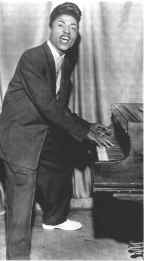
The screaming vocals, rattling keyboard style and
outrageous showmanship
of Little Richard set the standard for the flamboyant excess rock ‘n’
roll has come to
symbolize.
![]()
Richard Wayne Penniman was born December 5, 1932 one of
twelve children.
His father Charles “Bud” Penniman was a Seventh Day Adventist preacher
who sold
moonshine on the side. Richard grew up on a dirt street in an
impoverished section of
Macon, Georgia. Music was everywhere. Street vendors and evangelist who
paraded down his
block would sing as loud as they could, whether selling vegetables or
religion, to get
attention of folks inside. All the neighborhood sang freely as well,
improvising on
spiritual songs to keep them company as they worked. Some gospel
singers, particularly
Marion Williams of the Clara Ward singers, Sister Rosetta Tharpe, and
Mahalia Jackson had
a profound influence on Richard.
As a youngster he sang gospel with the Penniman Singers and Tiny Tots
Quartet. Richard had
an infectious, hyperactive personality that was contagious and made him
popular, but also
got him into trouble and his homosexuality didn’t help matters and he
left home to dance
to draw customer in a traveling medicine. By age fifteen he was a
regular with Sugarfoot
Sam’s Minstrel Show.
In 1951 at 18 he won a talent contest in Atlanta that led to a recording
contract with RCA
Victor. Four records were recorded that went nowhere.
A local musician Esquerita
took an
interest in Richard and taught him some piano techniques. In the winter
of 1952 his father
was murdered and he returned to
Macon to perform the blues at the Tick Tock Club in
the evening while washing dishes at the cafeteria of a Greyhound bus
station during the
day.
Bill Wright, a local blues singer from New Orleans, might have been
the person who had
the greatest influence on Richard. When Richard met Wright in 1952 he
was
immediately taken with Wright’s appearance. Wright wore pomade in hair
that was
piled high on his head and flashy clothes. It was Wright’s stage make
up of eyeliner
and face powder that really caught Richard’s attention.
While in Houston, his contract with RCA Victor expired, he recorded two
singles for
Peacock Records. One of the records “Rice, Red Beans and Turnip Greens”
sounded
like a precursor to “She’s Got It”. In early 1955 he recorded his last
two
singles for Peacock backed by the Johnny Otis Trio. One of the songs
“Little
Richard’s Boogie” offer a glimmer of his style.
Back in Macon in early 1955 Richard was again working as a dishwasher
when he cut a
demo tape. Lloyd Price, whom he knew, suggested that the demo be sent 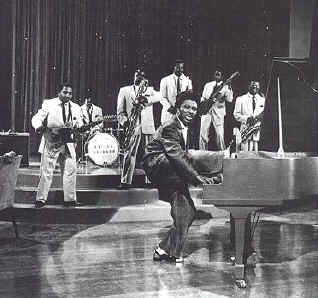 to Specialty Records
to Specialty Records
with whom Price recorded. Art Rupe,
the owner of Speciality, was hardly impressed and it would be six months
before he got a
call. A recording session was arranged in New Orleans’ J&M
Studios, owned
by Cosimo Matassa and the home studio of Fats Domino. Bumps
Blackwell was given the responsibility of meeting Richard and recording
the session.
Initially Blackwell, was no more successful then his predecessors.
Richard choose to
record generally slow blues and he felt that none were particularly
good. During a
break he and Richard went to the Dew Drop Inn. With few people there and
an old upright
piano, Richard started playing like crazy, singing loud, lewd and
hamming it up. Blackwell
was stunned why couldn’t he record this? Local lyricist was Dorothy
LaBostrie was called
to clean up the lyric. They went back to J&M and with only fifteen
minutes left in the
session. “Tutti Fruiti, good booty” became “Tutti Fruiti, aw-rootie”
and the rest is history.
From the time he began with Specialty on September 13, 1955 until he
left in October, 1957
Richard would record fifty songs, including alternate takes. From this
wealth of
material Specialty would release 9 singles and two albums.
For eighteen months between early 1956 to the middle of 1957
everything he recorded was
a hit and club dates were sellouts. He appeared in several movies
including “The Girl
Can’t Help It’ for which he recorded the title track. On October 12,
1957 he began a tour
of Australia with Eddie
Cochran and Gene
Vincent. In 1957, in the midst of a sold-out tour, Richard quit
rock ‘n’ roll,
after a plane scare, to become a preacher in the Seventh Day Adventist
Church.
Specialty wouldn’t let him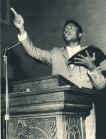 out of his contract without
out of his contract without
one last session.
He entered Oakwood Seminary in Huntsville, Alabama where he began
studies to become a
Seventh Day Adventist Preacher. In the meantime Specialty had enough
material to keep
releasing singles and albums for another year. Sensing he was being
cheated Richard hired
a lawyer to collect back royalties from Specialty Records that he
estimated at $25,000.
In January 1959 he signed with an Los Angeles agency to set up a
gospel tour and in
June signed a recording contract with Gone Records.
After three years of little success as a gospel performer Richard
went back to Rock and
Roll.. October, 1962 he began a tour of England and year later toured
Europe with
the Rolling Stones as his opening act.
A number of record companies took notice and invited him back to the
studio, but they
were only interested in repackaging his old hits. Specialty, in five
sessions attempted to
rekindle the 1957 magic.
During this period Jimi Hendrix was briefly Richard’s guitarists.
Little Richard enjoyed a renewed popularity with the rock and roll
revivals in the late
’60s. In 1970 he signed with Reprise Records and had a minor hit with
“Freedom
Blues.” For The Second Coming he was reunited with Bumps
Blackwell, Lee
Allen, and Earl Palmer.
In 1976 Little Richard returned to the ministry, and by 1979 had
recorded God’s  Beautiful City for World Records, and had become
Beautiful City for World Records, and had become
a full-time evangelist. In
October 1985 he was seriously injured in an accident in West Hollywood.
In 1986 he appeared in the hit movie Down and Out in Beverly Hills,
which included his
first hit in sixteen years, “Great Gosh a ‘Mighty,” and recorded
Lifetime Friend
for Warner Brothers. He dueted with Phillip Bailey on the title song to
the 1988 film
Twins and sang background vocals on the minor U2-B.b. King hit “when
Love Comes to
town” in 1989. In 1993 Little Richard performed at Bill Clinton’s
presidential
inaugural.
Little Richard was inducted into The Rock and Roll Hall of Fame in 1986


